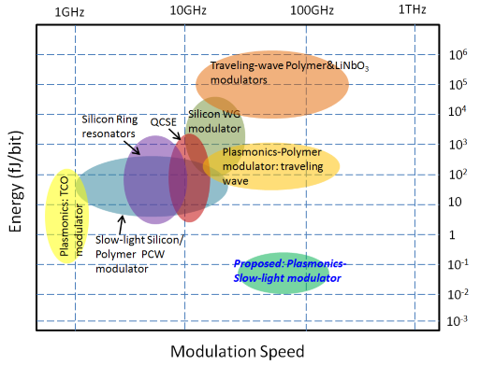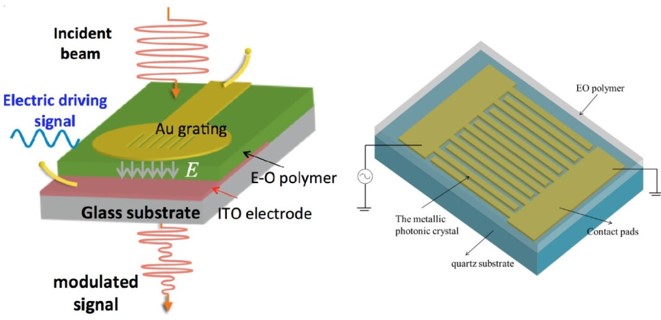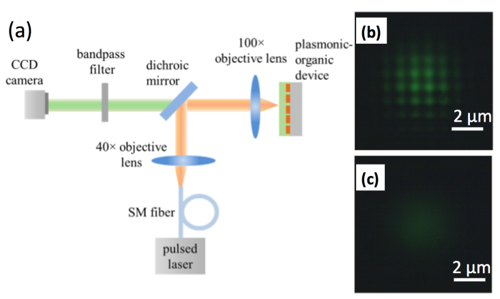Research team: Univ. Texas at Austin, Univ. Virginia, Univ. Delaware, Central Florida Univ., and Oregon State Univ.
External website link:
Even if the continuation of Moore's law meets a bottleneck, the increasing trend of network connections and bandwidth consumed is accelerating with no foreseeable sign of halting because of the bandwidth- Even if the continuation of Moore's law meets a bottleneck, the increasing trend of network connections and bandwidth consumed is accelerating with no foreseeable sign of halting because of the bandwidth-hungry applications. The total amount of content passing through the world’s networks is expected to increase to 35 Zettabytes(10^21)with unprecedented power consumption by 2020, meaning that by the end of this decade, with current technologies, service providers will need an astonishing over 20 times of power consumption they have in 2015.
Optoelectronic interconnects and optical logic gates provide key solutions to drastically reduce the power to modulate (e-to-o conversion), processing, Even if the continuation of Moore's law meets a bottleneck, the increasing trend of network connections and bandwidth consumed is accelerating with no foreseeable sign of halting because of the bandwidth-hungry applications. The total amount of content passing through the world’s networks is expected to increase to 35 Zettabytes(10^21)with unprecedented power consumption by 2020, meaning that by the end of this decade, with current technologies, service providers will need an astonishing over 20 times of power consumption they have in 2015.


Optoelectronic interconnects and optical logic gates provide key solutions to drastically reduce the power to modulate (e-to-o conversion), processing, transport, and demodulate (o-to-e) high speed signals with power consumption down to attojoule/bit (AJ/B) level. In this program, we propose a myriad of ultra-low power nanooptoelectronic devices for intra- and inter-chip optical interconnects and computing. Power saving and performance enhancement will be achieved with one- to two-orders of magnitude better than existing electronic counterparts.
The main research scope at OSU is the development of ultra-compact plasmonic modulators with the research goal of sub-femto-joule/bit energy efficiency. More research news will be released in the near future.
Related publications


In this three year project, we explored a new type of surface-normal electro-optic modulator using metallic grating with E-O polymer materials. The outcome of this project includes both fundamental study of the plasmonic nanostructure and the fabrication and characterization of the E-O modulator.
First, we discovered slow-light effect of subwavelength diffraction gratings via the Rayleigh anomaly using a fully analytical approach without needing to consider specific grating structures. Second, we investigated the enhanced optical nonlinearity enabled by localized plasmonic fields from the metallic nanostructure. Third, we investigated the fabrication processes to integrate E-O polymer with plasmonic nanostructures. Specially, we monitored the leakage current during the poling process, which proves to be very efficient in reducing the failure rate. Last but not the least we conducted the research for the theoretical design, fabrication, and optical characterization of a free-space surface-normal optical modulator using plasmonic grating integrated E-O polymer.
Related Publications include: